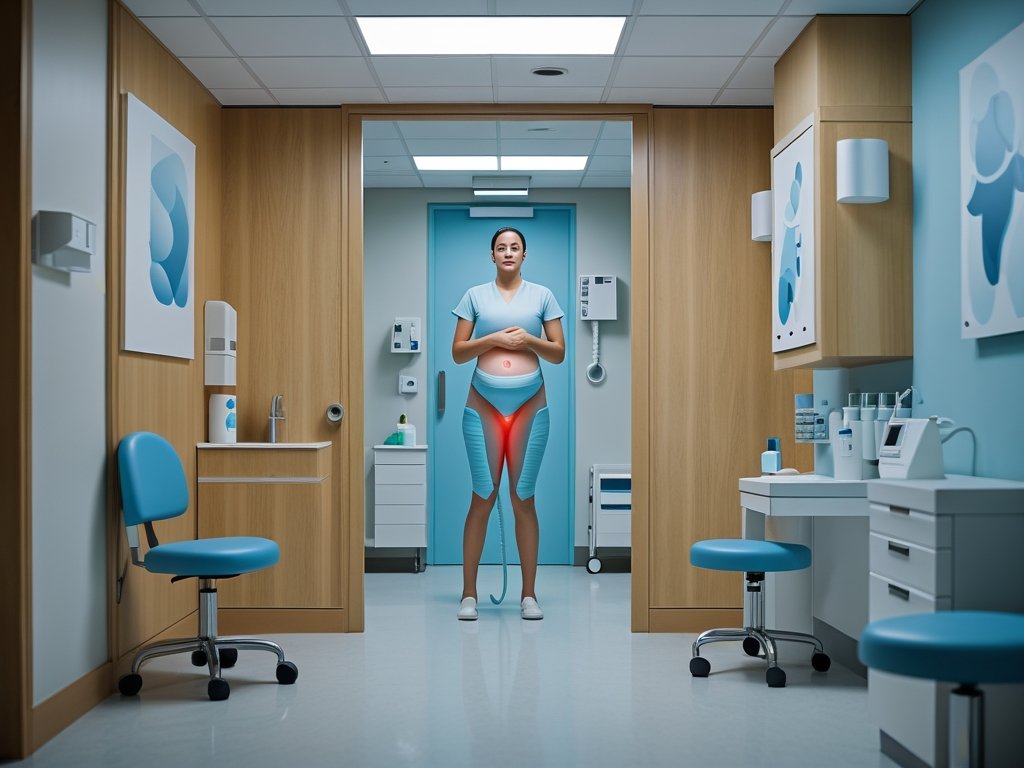Living with a sensitive bladder – whether due to Interstitial Cystic Syndrome (IC), Overactive Bladder (OAB), frequent UTIs, pregnancy, or simply heightened sensitivity – can significantly impact daily life. Many individuals experience days where the urge to urinate feels overwhelming, accompanied by discomfort, pressure, and even pain. These “bladder-heavy” days often necessitate a shift in routine, requiring careful consideration of activities and a focus on minimizing irritation. It’s about finding ways to still enjoy life, despite the challenges. This article isn’t about restricting yourself; it’s about adapting and discovering comfort strategies that empower you to navigate these difficult periods with grace and self-care.
The key is understanding your personal triggers and limitations. What exacerbates symptoms varies greatly from person to person. Some find certain foods or drinks problematic, while others struggle with stress or physical exertion. Identifying these individual factors allows for proactive planning and a more personalized approach to managing bladder discomfort. Importantly, remember that this is about self-management – it’s not about curing a condition, but about finding ways to live comfortably alongside it. It’s also vital to maintain open communication with your healthcare provider regarding any concerns or changes in symptoms. Considering dietary adjustments can be helpful – learning more about low-irritation meal options may offer some relief.
Gentle Movement and Mindful Activity
Physical activity, even when bladder symptoms are heightened, can be incredibly beneficial – but the type of movement is crucial. High-impact exercises like running or jumping should generally be avoided on particularly uncomfortable days, as they increase intra-abdominal pressure which can worsen urgency. Instead, focus on gentle forms of exercise that promote relaxation and minimize stress on the bladder. This doesn’t mean you have to skip activity altogether; it means being strategic about your choices. Yoga, specifically restorative or Yin yoga poses, are excellent options. Tai Chi and Qigong offer slow, flowing movements that can enhance body awareness and reduce tension. Even a gentle walk – at a comfortable pace – can be incredibly soothing.
Mindful activity is also important. This involves engaging in activities that require focus and presence, diverting your attention from bladder sensations. Creative pursuits like painting, drawing, knitting, or writing can all serve as excellent distractions. Reading a captivating book, listening to calming music, or spending time in nature are other effective ways to shift your focus. The goal isn’t necessarily about achieving something spectacular; it’s about finding activities that bring you joy and allow you to momentarily escape the discomfort. Remember – rest is productive too. Sometimes the most beneficial activity on a bladder-heavy day is simply allowing yourself permission to rest and recharge. Creating a comfortable environment for rest can be improved with suggestions from comfort-based bed setups.
Consider water intake during gentle movement. Staying hydrated is important, but timing can be key. Sipping small amounts of water throughout your activity can help avoid overwhelming your bladder. Avoid large gulps or drinking excessive amounts before or during exercise. Learning about optimal hydration practices can further support comfort.
Comfort-Focused Entertainment & Relaxation
Entertainment options often get overlooked when managing chronic conditions, yet they are vital for maintaining mental wellbeing. On days where even sitting comfortably feels challenging, consider auditory entertainment – podcasts, audiobooks, and calming music can provide distraction without requiring physical exertion. Visual entertainment also has its place but be mindful of what you’re watching. Action-packed or highly stimulating content might inadvertently increase anxiety which can exacerbate bladder symptoms. Opt for gentle comedies, nature documentaries, or heartwarming dramas instead. Creating a comfortable viewing environment is equally important – think soft blankets, supportive pillows, and dimmed lighting.
Relaxation techniques are fundamental to managing bladder discomfort. Stress and tension directly impact bladder function, so learning effective relaxation strategies is invaluable. Deep breathing exercises, progressive muscle relaxation, and guided meditation can all help calm the nervous system and reduce urgency. There are numerous apps and online resources available to guide you through these practices. Another powerful technique is visualization – imagining a peaceful scene or positive outcome can help shift your focus away from discomfort and promote a sense of calm. The key is consistency. Practicing relaxation techniques regularly, even when you’re not experiencing symptoms, will build resilience and make them more effective during challenging times. You might also find it useful to explore post-stress recovery techniques.
Creating a Comfort Zone at Home
Your home environment plays a significant role in managing bladder sensitivity. A dedicated “comfort zone” – a space designed specifically for rest and relaxation – can provide refuge on difficult days. This doesn’t require extensive renovations; simply designate an area where you feel safe, comfortable, and supported.
- Ensure easy access to the bathroom is paramount.
- Soft lighting and minimal noise are ideal.
- Comfortable seating with good support is essential.
- Keep a supply of comfort items nearby – blankets, pillows, books, music players etc.
Consider the clothing you wear at home. Tight-fitting clothes can restrict blood flow and put pressure on the bladder. Opt for loose-fitting, comfortable garments made from natural fibers like cotton or linen. Avoid materials that are irritating to your skin. Furthermore, consider a weighted blanket – the gentle pressure can be incredibly soothing and promote relaxation.
Navigating Social Situations
Social interactions can sometimes feel daunting when dealing with bladder sensitivity. The fear of needing to excuse yourself frequently, or experiencing an urgent need in public, can lead to anxiety and social withdrawal. Planning ahead is crucial. Before venturing out, identify potential restroom locations – both at your destination and along the route.
- Limit fluid intake a couple of hours before leaving home (but don’t dehydrate!).
- Wear dark-colored clothing as a precaution.
- Don’t be afraid to politely excuse yourself when needed.
- Communicate your needs to trusted friends or family members who can offer support.
Remember, you are not alone in this. Many people live with bladder sensitivities and have developed strategies for navigating social situations comfortably. It’s perfectly acceptable to prioritize your well-being and adjust your activities accordingly. Don’t feel pressured to participate in events that will exacerbate your symptoms – it’s okay to say no.
Dietary Considerations & Trigger Identification
While there’s no one-size-fits-all diet for bladder sensitivity, certain foods and beverages are known to irritate the bladder more than others. Common culprits include caffeine, alcohol, carbonated drinks, citrus fruits, spicy foods, artificial sweeteners, and acidic foods like tomatoes. Keeping a food diary can be incredibly helpful in identifying your personal triggers.
- Record everything you eat and drink for several days or weeks.
- Note any associated symptoms – urgency, frequency, pain, etc.
- Look for patterns between specific foods/drinks and symptom flare-ups.
Once you’ve identified potential irritants, try eliminating them from your diet one at a time to see if it makes a difference. Reintroducing foods gradually can help pinpoint exactly which ones are problematic. Hydration is also important, but as mentioned earlier, timing matters. Small, frequent sips of water are generally preferable to large gulps. Ultimately, the goal isn’t about strict restriction; it’s about making informed choices that support your comfort and well-being. To help refine this process consider identifying food avoidance patterns.





















